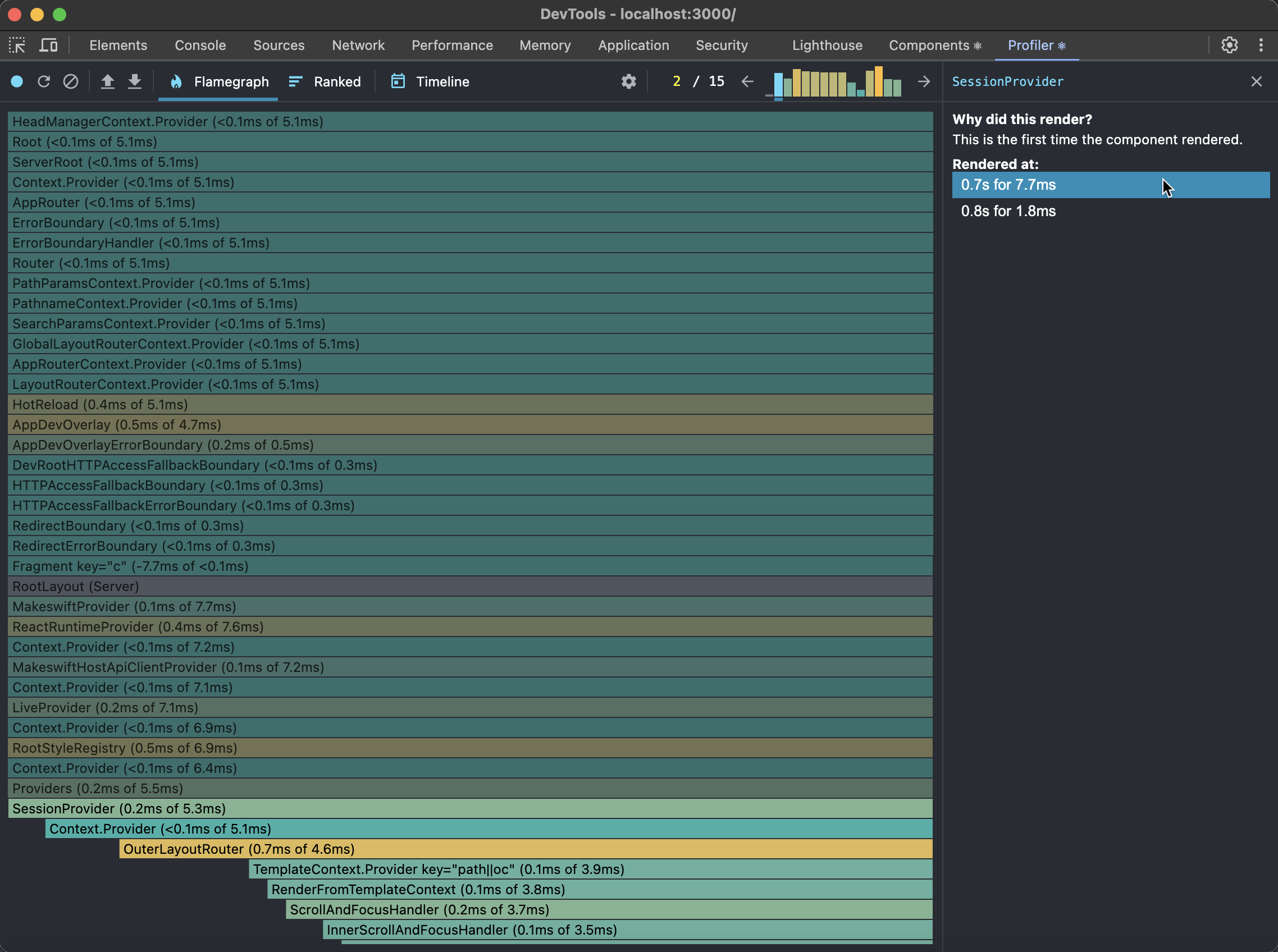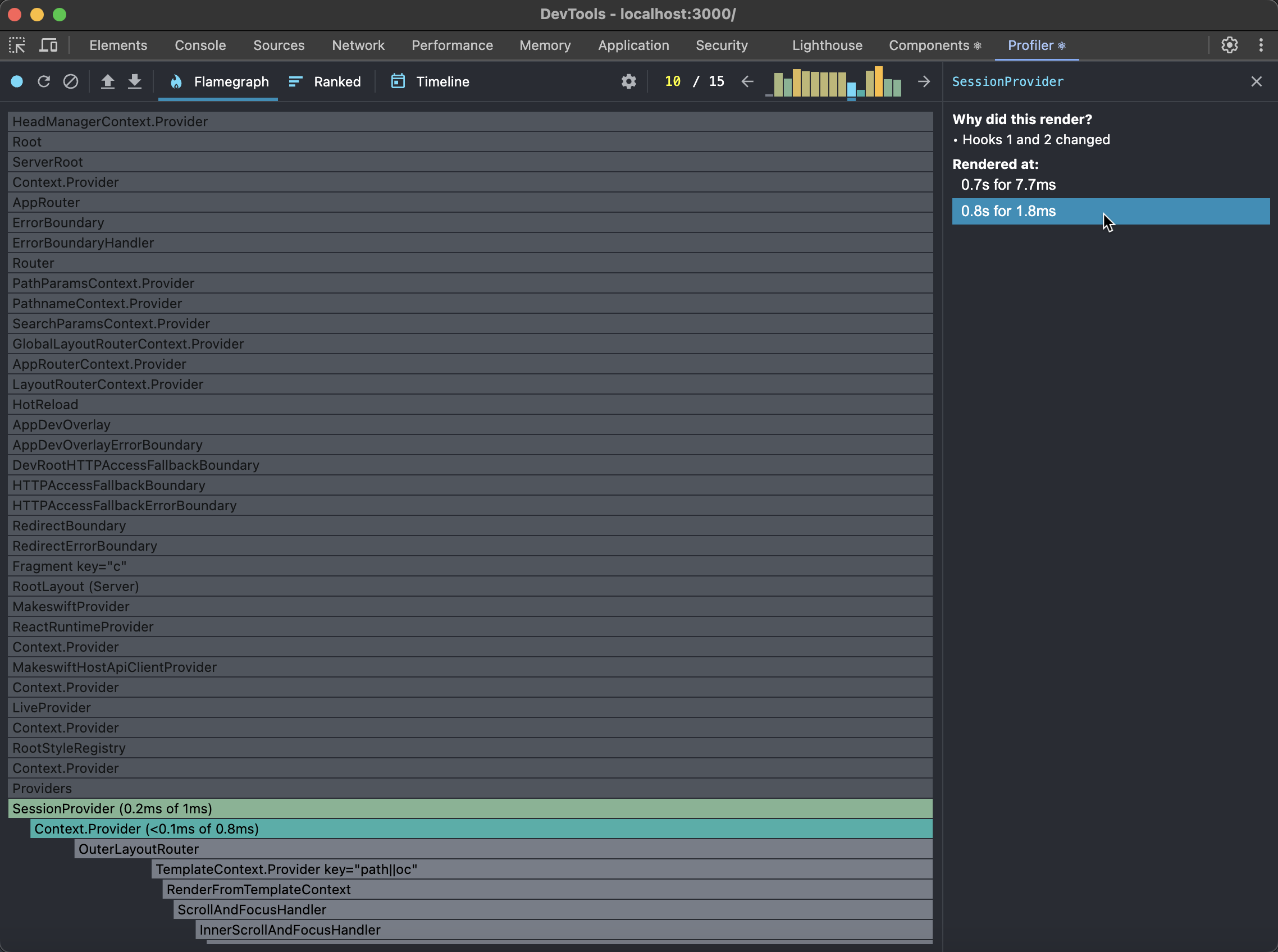What is a layout shift?
Layout shift is a common issue in web development where elements on a page move unexpectedly, causing a poor user experience. Here is an example of a layout shift:- Components re-rendering or remounting while page is loading
- Images or videos loading without a specified size
- Fonts loading and causing text to shift
Layout shift due to context update during hydration
Let’s illustrate how layout shift can occur in a real-world scenario. In this example, we will investigate a layout shift caused by a context update during the hydration process.Reproducing the issue
Imagine you have a Makeswift site and you want to usenext-auth for authentication capabilities.
So you add SessionProvider to manage the session state.
Since SessionProvider is a client component, you’d probably create a wrapper component, say Providers,
to wrap your SessionProvider and use it in your layout.tsx file.
Here is the code you might end up with.
To make the layout shift more noticeable, we added
header and footer components to the layoutDiagnosing a layout shift
Let’s investigate the layout shift we just created. We are going to use React Profiler from the React Developer Tools to see what is happening. Open DevTools in your browser and navigate to the Profiler tab. Record a profile of a page reload and take a closer look at the updates:SessionProvider is updated twice. The first update corresponds to the
initial render of the SessionProvider component:

SessionProvider component and is caused by changed props:

What’s happening?
So what’s going on here? Why is this happening? This is related to the way React handles updates during the hydration process. Let’s take a closer look at theSessionProvider component.
It accepts a session prop that is used to determine the current session state. The problem arises when the session prop is
updated during the hydration process.
Here is the summary of what is going on:
- The page is server-side rendered (SSR).
- The server sends the HTML to the client, and React begins hydration.
- While hydration is in progress, the client side receives a new update, in this case
sessionvalue for theSessionProvidercomponent. - This update interrupts hydration, causing React to discard the in-progress hydration and re-render the components on the client with the updated session value.
- While client side re-rendering is happening, React replaces the server rendered content with a client side fallback found in a closest
Suspenseboundary. The fallback happens to benullin this case. This effectively causes the layout shift.
Makeswift runtime library wraps all page components in a
Suspense boundary when serving a page.Diagnosing a layout shift caused by interrupted hydration can be tricky. React used to log a warning
for this situation when using the Next.js Pages Router (though the App Router suppressed it). That warning
was removed in later versions of React 18 and in React 19.
Fixing a layout shift
Fixing a layout shift is not always straightforward. The issue we encountered in this guide could be fixed by providingsession value to the SessionProvider component.
This way, the session value will not change during the hydration process, and React will not need to re-render the rest of the components.
In more complex cases, you might need to use different approaches and techniques.
Here are some tips that might help to narrow down the issue:
- Identify the components that are causing the layout shift.
- Inspect all updates that occur during page loading and the hydration process.
- For client components, provide the necessary props so server-rendered content matches the client-rendered content.
